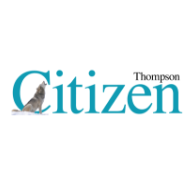Why is there a picture or icon of a computer mouse and perhaps a digital camera at the bottom of the story you just read you may wonder?
Good question. Here's your heads-up. In a nutshell, it is a quick and, we trust, easy way to let you know at the end - well, at least the end in our print edition anyway - of a story we have a longer version available for you to read online for people and subjects that really catch your interest and you want to know more about or delve into in some more depth. The computer mouse is your signal for that. The digital camera icon will serve the same purpose for signaling you that there are more photographs available to look at related to what you can see in the paper. Sometimes you'll get both more story and photos, other time it will be one or the other.
The reasons for this are pretty simple really. The newspaper is a fixed size every week - maybe 24 or 28 pages, maybe even more - but that's it; always a finite amount of newsprint with an upper limit on the page count. When we wrap some ads around the stories - or stories around the ads - depending on how you look at it, that at most leaves us room for a photo, maybe two, to go with a story.
Online we have none of those limitations.
If a story deserves to run longer, it can. Same for photos. An example of this kind of possibility is a recent story entitled, "Manitoba catches a break on forest fire season," which we ran online at about 3,400 words, six colour photos and one map. In print, we were only able to run a single photo because of space considerations.
While the icons of the computer mouse and digital camera, when they appear at the bottom of a newspaper story in print, will initially be used to primarily indicate additional or supplement photos, or a longer story, they may in future also represent other forms of supplemental material, such as hypertext links to other websites, or perhaps an external report from a government agency or private business in Adobe Portable Document Format (PDF) - the possibilities are almost endless.
For the Thompson Citizen, the website evolution has been marked by several stages over the last two and a half years. Starting out virtually as a staff masthead webpage on the Internet, we moved last October to offer readers the ability to download the entire contents of both the Thompson Citizen and Nickel Belt News as Adobe Portable Document Format (PDF) files. The feature has proved so popular we've retained the PDF format download option for readers on our new highly interactive website.
Our colleagues at Glacier Media Inc., led by Neetu Shokar, project manager for website development with Glacier Interactive Media in Vancouver, and trainer Pina Belperio, from Whistler, B.C., have been working with us on the new Thompson Citizen website at http://thompsoncitizen.net since late April.
For techies, or those who just may want to know, our digital media content management architecture is delivered through SAXOTECH, Inc., headquartered in Tampa, Fla.
Along with more photos and in-depth stories online when you see the new icons, you can also scroll over and click on our very popular Nickel Belt News front page photo contest gallery and columnists, and read national and international stories from the Canadian Press, (CP), check out our Fundata stock market and TV listings, along with watching video from the Canadian Press.



